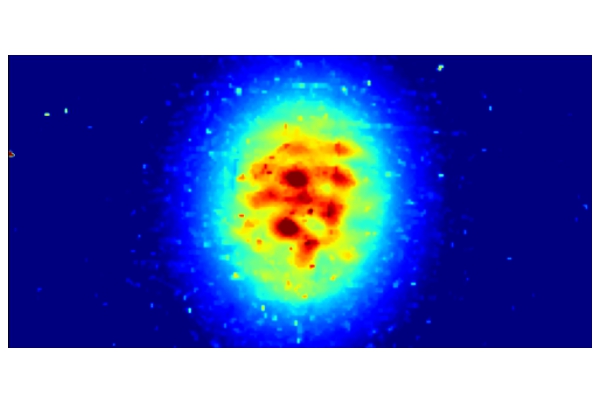Filamentation of a relativistic proton bunch in plasma

The Advanced Wakefield Experiment (AWAKE) at CERN in Switzerland is probing our understanding of particle beam-plasma interactions. The goal is to develop plasma wakefield accelerators; a promising alternative to conventional RF-based accelerators, with an ability to operate at much higher accelerating gradients (>1 GeV/m).
The AWAKE Experiment at CERN has already demonstrated that a proton beam from the Super Proton Synchrotron (SPS) with 400 GeV energy can be used to drive a wakefield in a rubidium-based plasma channel. This has been used to accelerate low energy witness electron bunches up to 2 GeV.
The focus has recently shifted to studying the complex physics involved in producing, maintaining, and utilising these wakefields. This has led to studies into various plasma instabilities which are obstacles to producing quality accelerated beams for applications. As these instabilities are common issues across all types of plasma wakefield acceleration, the work at AWAKE is contributing to the wider research community, rather than being specific to proton-driven techniques.
A recent paper has shed further light on one such instability. ‘Filamentation’ produces transverse fragmentation of the proton bunch into narrow dense strands. This destroys the structure of the proton bunch, and hence limits the ability of the bunch to produce effective wakefields within the plasma. It could therefore fundamentally restrict the quality of the witness electron bunches undergoing acceleration.
The goal of this study was to investigate the origins of this instability and the conditions under which it would develop. However, the plasma source used at AWAKE is an ionised rubidium vapour, the properties of which are not well suited to this kind of study. Fortunately, another goal of AWAKE is to demonstrate the use of scalable plasma sources, and last year such a device was installed and tested.
These sources consist of a 10m long glass tube filled with gas, in this case argon, which is ionised using a high voltage discharge. These devices allow for a wide range of plasma densities to be studied by simply varying the pressure of the gas in the tube before ionisation. The measurements consisted of monitoring the transverse profile of the proton bunch before and after the plasma column at different plasma densities.
Livio Verra is a scientist currently working at INFN, who was previously been part of the AWAKE team and received his PhD thanks to his work on filamentation at AWAKE. Livio is the lead author of an article on filamentation that has just been published in Physical Review E.
In this article, Livio and colleagues from the AWAKE collaboration demonstrate that filamentation of a relativistic proton bunch propagating through a plasma occurs when the transverse radius of the bunch exceeds 1.5 times the plasma skin depth. This is a parameter directly linked to the density of the plasma. Filamentation showed itself as over-dense regions appearing within the transverse profile – or hot spots. This can be seen in the image at the top of this article.
The results from AWAKE show that this instability can be suppressed, or even avoided, by monitoring and maintaining the correct relation between transverse beam size and plasma density. The conclusions from this work are not exclusive to AWAKE - the implications are wide reaching, and will likely feed into the develop of most future plasma wakefield accelerators.
More information:
L. Verra et al. (AWAKE Collaboration), “Filamentation of a relativistic proton bunch in plasma”, Phys. Rev. E 109, 055203 (2024).
https://doi.org/10.1103/PhysRevE.109.055203
*Image: Visualisation of the transverse magnetic fields produced in the filamentation instability for four different proton-plasma interaction events.